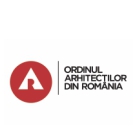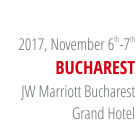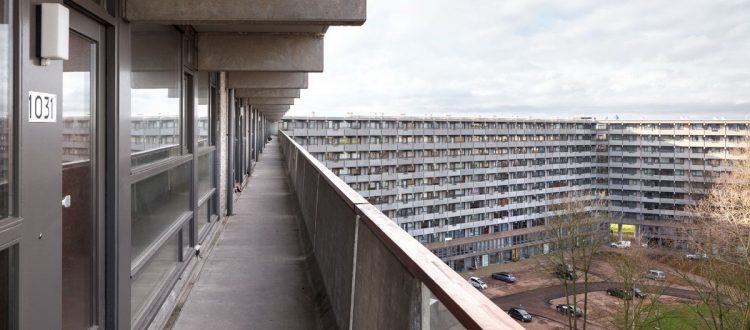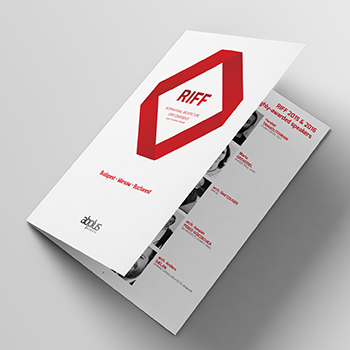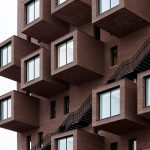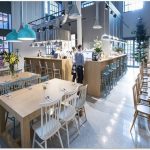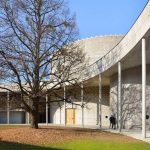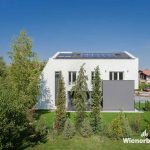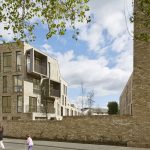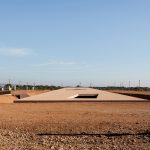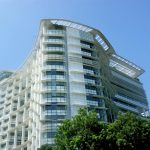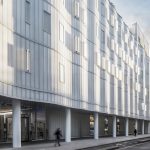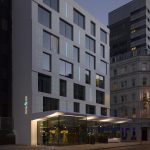Architecture, today. A dialogue with Xander Vermeulen Windsant, the Mies van der Rohe 2017 winner, for SHARE Forum 2017
The co-author of the winning entry for MiesArch Award 2017, the Dutch architect Xander Vermeulen Windsant, will be attending the autumn edition of SHARE Forum 2017 on 6-7 November at the JW Marriott Grand Hotel in Bucharest. He will hold a lecture about the winning project, Kleiburg (photo above, © Stijn Poelstra), the renovation of the biggest residential building from Amsterdam.
From the author: Kleiburg, an over 400m long apartment building with 500+ units, is part of the Bijlmermeer, an urban residential ensemble hailed ‘The city of the Future’ when it was built around 1970. Built within 7 years, and in the end home to 100.000 inhabitants, the neighborhood deteriorated quickly after completion. Following the crash of an ELAL Boing 747 in 1992, a large scale urban transformation project was launched. Therefore, almost all the original slab buildings were demolished, and the remaining ones were redeveloped. Key to the approach was to erase or at least radically ‘improve’ the original urban architecture. Kleiburg was the last remaining, still original Bijlmer building, set for demolition. Following protest form residents, four developers proposed a radical way to save the building. At the lowest point of the financial crisis, this was the starting point of exciting transformation process which saved Kleiburg for the city, and in the end provided over 500 affordable and unique apartments for Amsterdam.
“It challenges current solutions to the housing crisis in European cities, where too often the only ambition is to build more homes year-on-year, while the more profound question of what type of housing should be built goes unanswered. Kleiburg helps us imagine a new kind of architectural project, which responds to changing household patterns and lifestyles in the twenty-first century. A revitalization of typologies of the past is as relevant as experimenting with new, untested models in this quest, just as radically transforming existing buildings is.
The project inspires reflection on the new and complex reality of contemporary living. It proposes new forms of “affordable housing”, adding to what is universally a complex and multi-layered offer (ranging from fully subsidized rent to shared ownership and rent-purchase schemes) by providing options for the large majority who have a little money but cannot afford to get on the conventional property ladder. This is low-cost habitable space (€1,200 per m2) – a fantastic new option that does not currently exist.”Jury citation, Mies van der Rohe 2017
The intervention required a process of transformation of the ground floor into residential and public facilities by relocating the storage room to the upper floors, also allowing some large openings to connect the two sides of the building. The vertical and horizontal circulation was redefined to commit to the original concept and image of the building. Moreover, the original concrete finishes were brought again to life by sandblasting. The transformation stopped paradoxically at the apartment doorsteps which were left empty, creating the opportunity for people to buy them at a lower price and design their homes by themselves.
Xander Vermeulen Windsant, was kind enough to offer us the honor of the following interview. We will have the chance to meet him in person at the RIFF 2017 expo-conference on 6-7 November at the JW Marriott Grand Hotel, a part of the autumn edition of SHARE Forum 2017. We invite you to register your participation following http://bucharest.ieriff.eu/2017-register-en/ and join us in this experience!
An interview recorded by Ruxandra Grigoras, Associate Editor at share-architects.com
__________
Ruxandra Grigoraș: My first question goes right to the Mies van der Rohe Award that De Flat received. The project is the first of its kind to be rewarded by the Foundation. The EU Mies Awards jury citations portray the image of a new kind of architecture that is emerging. How would you describe it?
Xander Vermeulen Windsant: By awarding Kleiburg, it is the first time the prize has been awarded to a housing project and at the same time to a refurbishment project. Or put the other way around: this year the prize has not been awarded to a (prestigious) public building and/or infrastructure project.
In the decision of the jury you could read a shifting focus for architecture: away from the (often spectacular) and global production of ‘iconic’ public buildings, designed by globally working ‘star architects’ to a more modest, hands-on, architecture that is intimately connected to local networks and initiatives. According to the jury, Kleiburg shows the possibilities of architecture working in close collaboration with local inhabitants and professionals like project developers, to produce new and relevant conditions for the everyday life of inhabitants of the city. It promotes a, what you might call, more ‘social’ agenda for architecture. As such the jury promotes an agenda of architecture that is maybe less spectacular and photogenic, but has a profound impact on the everyday life of the city. This agenda has always been there of course, but has received less attention in the last decades. We face incredible demographic processes and ongoing urbanization, not only in Europe but worldwide, so the jury’s decision to award the Mies Award to a project that deals with these challenges is a strong message to the profession to deal with these issues (too).
RG: The project was the result of a collaboration between two architecture offices. How would you describe this collaboration and what lead to it? Also, how would you define the architect in you through this project?
XVW: This was the first time we, our client and we as architects, did a project like this. So we had to ‘invent’ the way of doing it. From this came the realization that we needed different kinds of expertise during the process, expertise that NL and XVW could provide. We were both invited to participate by the four initiators. The result is a collaborative effort of our clients, the 500 home owners, our work and the work of many others.
Personally, I started my office in 2010 to seek out new kinds of collaborations with project developers and future inhabitants of projects. Kleiburg was an incredible opportunity that fitted this ambition perfectly. After 5 years of working on the project, it has proven that this way of working fits me very well, and more importantly: it produces projects with real impact. Parallel to working on Kleiburg I was also the architect for a project that had a similar process, albeit much smaller in scale, for a different kind of client and a totally different site. It is a way of working I enjoy and continue to do.
RG: The building that is the object of the intervention was part of a larger ensemble which has a long and interesting story. The intervention itself is between preservation/restoration and clear architectural gestures; it goes beyond all that into behavior and contemporary lifestyles. Tell us how the concept took shape.
XVW: The concept was clear from the start: keep and strengthen what is valuable (apartment floor plans, during the process: the concrete) and change what is problematic (ground floor, circulation spaces). This was both the concept for the development and the architecture. Along the way, we had to discover the most effective way of implementing this concept. The existing structure demanded very precise interventions: its structure had no ‘surplus’, so every intervention needed to have ‘surgical’ precision. This was a constraint, but at the same time a blessing: it forced us to design our interventions with great care, and as such it relates in a self-evident way to the existing architecture. Our approach was in a way very sensitive. Through this sensitivity the monumentality of the incredible size and concrete reality of the building could start speaking for itself again. At the same time, it gave room for interventions that were really about how you engage and experience the building in everyday life. In the end, these two aspects came together and strengthen each other.
RG: Share with us some architectural trivia: what do you consider to be the best part of working on this project? Any less enjoyable parts? Do you feel something was left behind or got lost on the way?
XVW: In the trivia department, part of the development process was a series of (architectural) interventions to show future inhabitants the possibilities of the apartments. We worked on one of these interventions. In line with the DIY-concept, we build it ourselves during a cold November week. It was a great hands-on, and a very physical experience: drilling holes in the structural concrete was hard work! Form this I gained a lot of respect for everybody that worked so hard on their dream-apartment.
In a project with such tight financial constraints, it was of course not possible to use materials with the high finish and specs we prefer to work with. But in the end, we could choose materials that were in line with the existing building. In a way, the tight constraints were a blessing in disguise.
RG: Have you been there recently? How did the atmosphere change?
XVW: I have, and it is great to see that the building is really part of everyday life of the Bijlmer. When I speak to people there, many ask the question why so many of the other original Bijlmer flats have been demolished. Kleiburg proves to them that with the right approach, many of them could have remained.
RG: Do you have in mind a personal statement on architecture, a credo, or a definition that you always think of when you practice architecture?
XVW: No, and I prefer not to have one. I think that architecture has enough slogans. I like to try to approach each project with as little bias and preconceived ideas as possible. I believe that in order to arrive on an architecture with real impact, I have to really understand the ‘inner workings’ of a project. This is best arrived on with an open and curious mind, I think.
RG: What do you think to be key aspects of practicing architecture? What is the contemporary relationship between architecture (the whole process), its message and the action of building something new?
XVW: See also above. I do not see myself as an ‘architectural problem solver’. My focus is on trying to develop spatial value in a project. What ‘value’ is, is different in each project. For me architecture is about giving form to spatial transformation, of adding value to a preexisting condition. There is always a condition, socially, economically and spatially you start from. A tabula rasa is never really there. Getting to understand these conditions and defining the appropriate value as a driver for the architecture, is what I look for. This may sound very abstract when generally put. But in each project, this is made very concrete and explicit.
I think we are in a very interesting and exciting moment in time for the profession. In the contemporary context, I find it difficult to see a general ambition for architecture. Many architects work from their personal craftsmanship, producing incredible work. But other than striving for ‘sustainability’, I see no other common agenda. Sustainability is very relevant, but I find it difficult to recognize a real impact on architecture yet: buildings are packed with intelligent mechanical installations, we focus on the reuse of materials, but the impact on architectural form is not clear for me. While at the same time I believe sustainability could have the same impact on architecture that the use of steel or concrete has had. This is a question I find very interesting for my work, although I do not have the answers yet.
__________
Xander Vermeulen Windsant is the founding member of the Dutch studio XVW architectuur. He studied at the Delft University of Technology from 1999 to 2004 and graduated with Honours. After working with one of the leading architecture offices in Amsterdam, he established his own office in 2010 to independently address a new agenda for architecture emerging in the ongoing economic crisis.
In 2017, Kleiburg, was named the winner of the EU prize for Contemporary Architecture, the Mies van der Rohe Award 2017 (in collaboration with NL Architects).
He has been a visiting critic at the Faculty of Architecture, Delft University of Technology. He regularly writes for Dutch online architecture platform Archined.nl.



